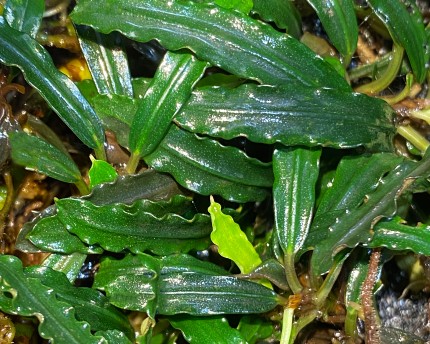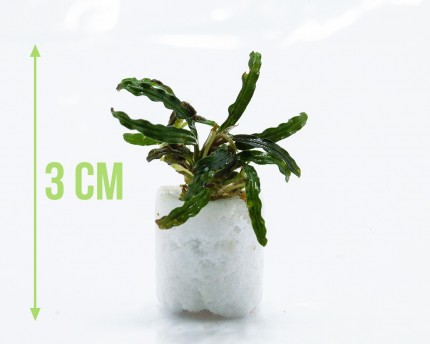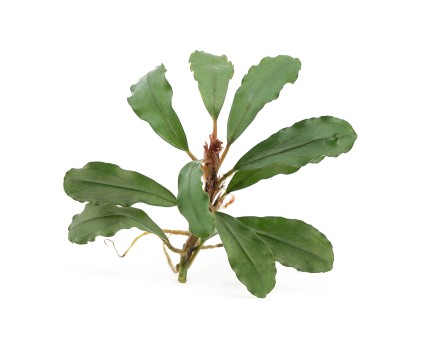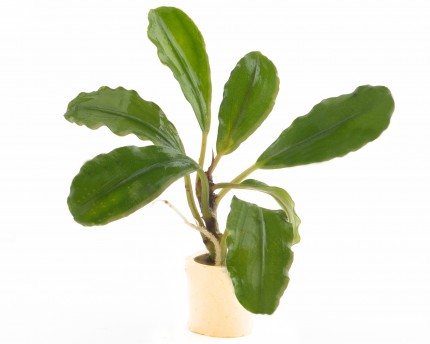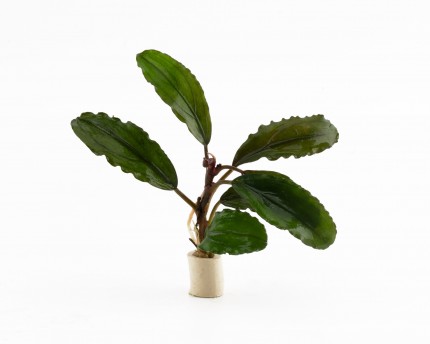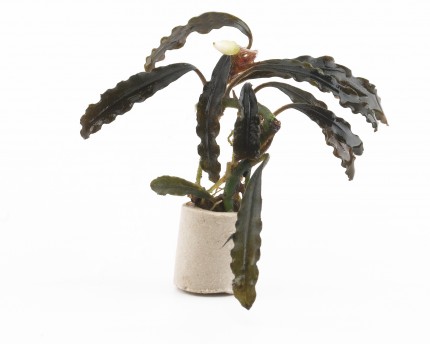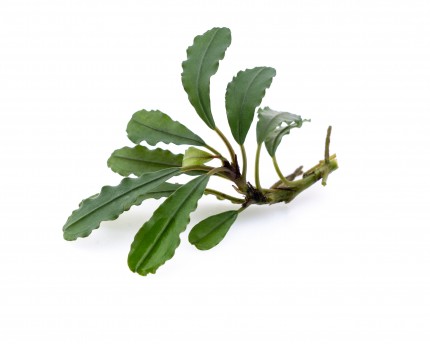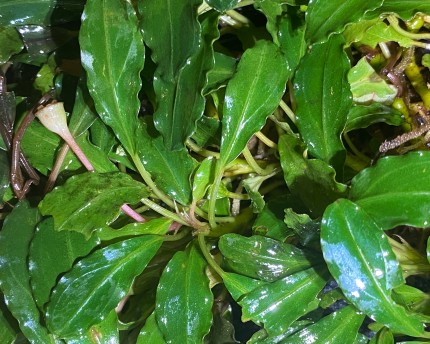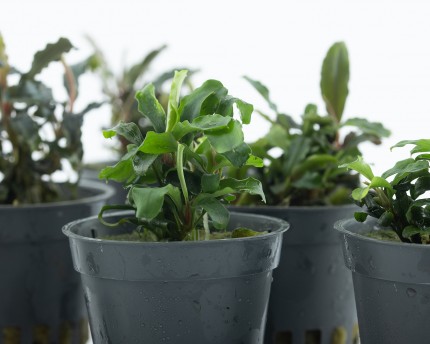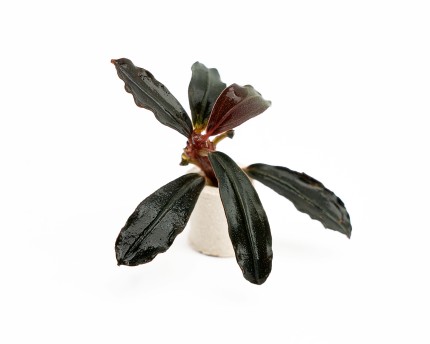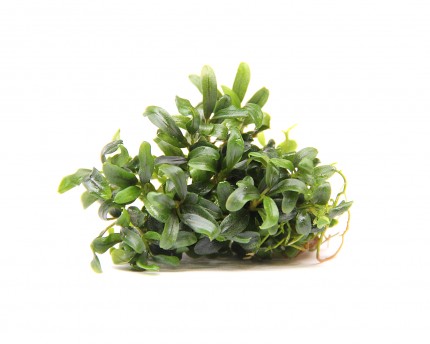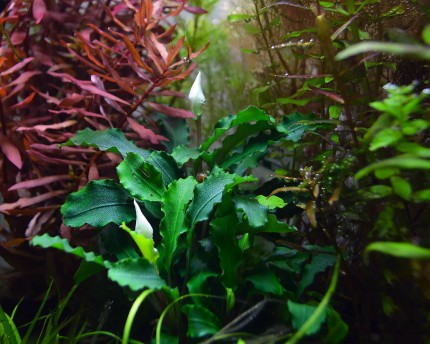Bucephalandra: origin and way of life in the biotope
The plants originate from Indonesia, where they occur in the splash zone of small, clear, relatively fast-flowing streams. During the rainy season they continue to grow under water for months. They therefore cope wonderfully with a permanently submerged lifestyle. With a preferred water temperature of 20 to 27 °C, the plants are also very suitable for shrimp tanks that are operated at room temperature.
Bucephalandra care in the aquarium
The plants grow very slowly. They are attractive not only because they do not grow overgrowth, but also because they can be excellently tied on wood and stones with nylon thread or glued on with superglue or a special plant glue. Cultivated they are quite like Anubias, like these Bucephalandra are perching plants. The rhizomes should not be planted in the substrate, where they can quickly rot and the plant dies.
With their reddish-green, brown, medium to dark green, even dark blue-green and grayish hues and different leaf shapes, the different varieties of Bucephalandra motleyana are a beautiful addition in the middle ground on wood and stones or in the foreground. With an average growth height of 10 to 12 cm maximum, they are virtually predestined for these areas. Their special colors and shapes form beautiful contrasts to stem plants in the background, and they can thus be used quite excellently as eye-catchers in the middle ground. In the nano aquarium you can create whole landscapes with them. There they look particularly good on lava stones or other dark rock types.
Emers cultivated Bucephalandra must first adjust to the changed living conditions in the aquarium, thereby the leaf color can change. In vitro grown plants, on the other hand, already have the underwater form and continue to grow seamlessly.
Propagation of Bucephalandra
A healthy rootstock (rhizome) can be recognized by the fact that it is very firm. Even if the leaves should have suffered due to transport, healthy foliage will grow back from a healthy rhizome. If it is muddy in places, these areas should be cut off generously. Over time, the rhizome branches out and the plant slowly spreads. If you divide the rhizome or cut off the runners, you can propagate Bucephalandra well. However, the divisions take a longer time to grow into large plants.
Meanwhile, there are many who collect the rarity Bucephalandra and do not miss any of the new varieties.
For the appropriate all-round supply of your Bucephalandra with all important nutrients, we recommend our NatureHolic plant fertilizers.

